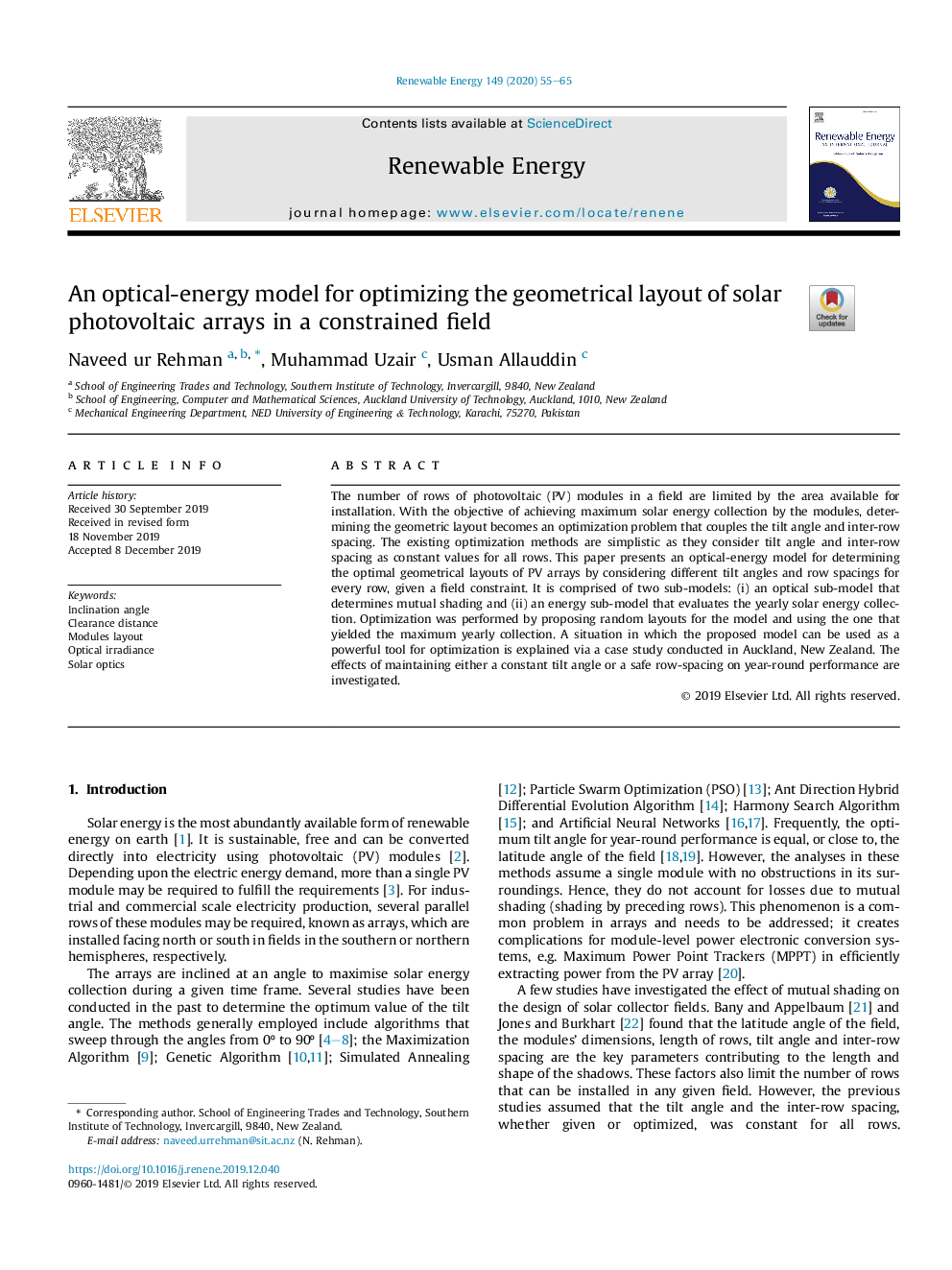| Article ID | Journal | Published Year | Pages | File Type |
|---|---|---|---|---|
| 13422247 | Renewable Energy | 2020 | 11 Pages |
Abstract
The number of rows of photovoltaic (PV) modules in a field are limited by the area available for installation. With the objective of achieving maximum solar energy collection by the modules, determining the geometric layout becomes an optimization problem that couples the tilt angle and inter-row spacing. The existing optimization methods are simplistic as they consider tilt angle and inter-row spacing as constant values for all rows. This paper presents an optical-energy model for determining the optimal geometrical layouts of PV arrays by considering different tilt angles and row spacings for every row, given a field constraint. It is comprised of two sub-models: (i) an optical sub-model that determines mutual shading and (ii) an energy sub-model that evaluates the yearly solar energy collection. Optimization was performed by proposing random layouts for the model and using the one that yielded the maximum yearly collection. A situation in which the proposed model can be used as a powerful tool for optimization is explained via a case study conducted in Auckland, New Zealand. The effects of maintaining either a constant tilt angle or a safe row-spacing on year-round performance are investigated.
Keywords
Related Topics
Physical Sciences and Engineering
Energy
Renewable Energy, Sustainability and the Environment
Authors
Naveed ur Rehman, Muhammad Uzair, Usman Allauddin,
